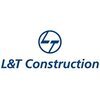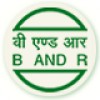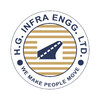Filter interviews by
Bridge & Roof Co Admission Executive Interview Questions and Answers
Bridge & Roof Co Admission Executive Interview Experiences
1 interview found
(1 Question)
- Q1. Gate pass Vehicle metriyal manpower pulice police verification. side se relative all work
Interview Preparation Tips
Top trending discussions






Interview questions from similar companies

I applied via Walk-in and was interviewed in Jul 2019. There were 5 interview rounds.
Interview Questionnaire
3 Questions
- Q1. Departmental questions were put up.
- Q2. HR was asking to rate yourself in computer knowledge, punctuality & gentleman.
- Q3. Senior Director were asking for my personal approach that under whom I was working in my previous organization & also relate to long time career goal.
Interview Preparation Tips

I applied via Company Website and was interviewed in Jun 2021. There was 1 interview round.
Interview Questionnaire
1 Question
- Q1. Procurement process..
Interview Preparation Tips

Administration Assistant Interview Questions & Answers
L&T Constructionposted on 8 Feb 2025
I appeared for an interview in Jan 2025.
(2 Questions)
- Q1. WHAT IS RESPONSBILITY OF ADMIN
- Ans.
The responsibility of an admin includes managing office operations, organizing files, scheduling appointments, and providing administrative support.
Managing office operations such as answering phones, ordering supplies, and coordinating meetings
Organizing files and maintaining records for easy access
Scheduling appointments and managing calendars
Providing administrative support to staff members
Handling correspondence an
- Q2. HOW TO HANDLE ADMIN WORK
- Ans.
Handling admin work involves organization, time management, attention to detail, and communication skills.
Prioritize tasks based on urgency and importance
Use organizational tools such as calendars and to-do lists
Maintain accurate records and files
Communicate effectively with colleagues and clients
Stay updated on office policies and procedures
Seek help or clarification when needed
Interview Preparation Tips

I appeared for an interview before Mar 2024.
(5 Questions)
- Q1. What was the major challenge you faced in your last assignment, and how did you cope with it?
- Ans.
In my last assignment, I faced significant resistance to change during a major organizational restructuring, which I navigated through strategic communication.
Identified key stakeholders who were resistant to change and engaged them in one-on-one discussions to understand their concerns.
Developed a comprehensive communication plan that included regular updates and feedback sessions to keep everyone informed and involve...
- Q2. How are you controlling employee attrition?
- Ans.
We control employee attrition through engagement, feedback, and career development initiatives.
Implement regular employee surveys to gauge satisfaction and address concerns promptly.
Offer competitive compensation packages and benefits to retain top talent.
Create clear career progression paths and provide training opportunities for skill development.
Foster a positive workplace culture through team-building activities an...
- Q3. Do you have any mobility issues?
- Ans.
I do not have any mobility issues and can perform all required tasks without limitations.
I can walk, stand, and move freely without assistance.
I have no history of injuries or conditions affecting my mobility.
I regularly engage in physical activities, such as jogging and hiking.
- Q4. What is your career aspirations?
- Ans.
I aspire to lead innovative projects that drive organizational growth while fostering a culture of collaboration and continuous improvement.
Aim to secure a leadership role where I can influence strategic decisions, like becoming a Chief Operating Officer.
Desire to mentor and develop talent within the organization, similar to how I guided junior team members in my previous role.
Plan to drive initiatives that enhance ope...
- Q5. Why you want to leave the present organisation?
- Ans.
I seek new challenges and opportunities for growth that align with my career aspirations and values.
Desire for professional growth: I feel I've reached a plateau in my current role and am eager to take on more responsibilities.
Alignment with career goals: My long-term goals include leadership positions, which I believe your organization can provide.
Cultural fit: I am looking for a workplace that values innovation and c...
Interview Preparation Tips

I applied via Company Website and was interviewed before Apr 2021. There were 7 interview rounds.
Accident, incident
Any hazardous
Any near miss
HIRA
Interview Preparation Tips
- Diploma Fire and Safety

I appeared for an interview in Jan 2025.
(2 Questions)
- Q1. What is hira ?
- Ans.
HIRA stands for Hazard Identification and Risk Assessment. It is a systematic process used to identify potential hazards and analyze the associated risks in a workplace.
HIRA involves identifying hazards that could cause harm, assessing the risks associated with those hazards, and implementing control measures to mitigate the risks.
It helps in creating a safer work environment by proactively addressing potential risks b...
- Q2. What is ua/uc.
- Ans.
UA/UC stands for Unsafe Acts/Unsafe Conditions, which are factors that contribute to accidents in the workplace.
UA refers to actions taken by individuals that are unsafe, such as not wearing proper protective equipment.
UC refers to conditions in the workplace that are unsafe, such as faulty equipment or inadequate lighting.
Identifying and addressing UA/UC is crucial in preventing accidents and promoting a safe work env
(2 Questions)
- Q1. What is jsa. & LOTo system.
- Ans.
JSA stands for Job Safety Analysis, a process of identifying potential hazards in a job task. LOTO system stands for Lockout/Tagout, a safety procedure to ensure dangerous machines are properly shut off and not started up again prior to the completion of maintenance or servicing work.
JSA involves breaking down a job task into steps, identifying potential hazards at each step, and implementing controls to mitigate the r...
- Q2. What is material handling.How many types of Material handing.
- Ans.
Material handling refers to the movement, control, and protection of materials throughout the manufacturing, warehousing, distribution, consumption, and disposal processes.
Material handling involves the movement of raw materials, work in progress, and finished goods within a facility or between different locations.
There are four main types of material handling: manual, semi-automated, automated, and mechanized.
Examples...
Interview Preparation Tips

I appeared for an interview in Jan 2025.
I am a safety officer, I have 2 years of experience, currently I am working in Hyundai construction equipment Pune.
I have done fire industrial safety management course from National Technical Institute in Jamshedpur and have completed my 12th, basic courses ADCA Excel MS office MS PowerPoint etc.
(2 Questions)
- Q1. How many hours of duty do I have to do?
- Q2. Is it a construction line or an industrial line?
- Ans.
It is a construction line.
Construction line involves building structures like houses, roads, bridges, etc.
Industrial line typically refers to manufacturing processes in factories.
Examples of construction line companies: Bechtel, Fluor Corporation
Examples of industrial line companies: General Electric, Toyota
Safety assignments can involve identifying hazards, assessing risks, and developing safety procedures.
Identifying hazards Identify potential hazards, Decide who might be harmed and how, and Evaluate the risks.

(2 Questions)
- Q1. Why da you leave this previous company??
- Q2. Why do you Job
(1 Question)
- Q1. What is your favorite???

(3 Questions)
- Q1. Whats is a Safety policy
- Ans.
A safety policy outlines an organization's commitment to maintaining a safe work environment and preventing accidents.
Defines safety objectives and responsibilities for all employees.
Establishes procedures for reporting hazards and incidents.
Includes training requirements for staff on safety practices.
Outlines emergency response plans, such as evacuation procedures.
Regularly reviewed and updated to reflect changes in r
- Q2. What is a safety
- Ans.
Safety is the condition of being protected from harm or danger, ensuring well-being in various environments.
Safety involves identifying hazards and implementing measures to mitigate risks.
Examples include using personal protective equipment (PPE) in construction sites.
Safety protocols are essential in workplaces to prevent accidents and injuries.
Regular safety training helps employees understand and follow safety guide
- Q3. A safety policy is a set of rules and procedures that an organization has in place to protect people from harm
Bridge & Roof Co Interview FAQs
Tell us how to improve this page.
Bridge & Roof Co Interviews By Designations
- Bridge & Roof Co Safety Officer Interview Questions
- Bridge & Roof Co Scaffolding Inspector Interview Questions
- Bridge & Roof Co Planning Engineer Interview Questions
- Bridge & Roof Co Electrical Engineer Interview Questions
- Bridge & Roof Co Diploma Electrical Engineer Interview Questions
- Bridge & Roof Co Assistant Construction Manager Interview Questions
- Bridge & Roof Co Safety Officer/Manager Interview Questions
- Bridge & Roof Co QA QC Engineer Interview Questions
- Show more
Interview Questions for Popular Designations
- Admission Counsellor Interview Questions
- Admission Officer Interview Questions
- Admission Manager Interview Questions
- Sr. Admission Counselor Interview Questions
- Senior Admission Counsellor Interview Questions
- Senior Admissions Counsellor Interview Questions
- Student Support and Admission Officer Interview Questions
- Senior Admissions Officer Interview Questions
- Show more
Interview Questions from Similar Companies
|
Safety Officer
156
salaries
| ₹1.8 L/yr - ₹6.3 L/yr |
|
Civil Site Engineer
155
salaries
| ₹1.7 L/yr - ₹6 L/yr |
|
Site Engineer
144
salaries
| ₹1.8 L/yr - ₹6 L/yr |
|
Piping Engineer
83
salaries
| ₹2.4 L/yr - ₹9 L/yr |
|
Mechanical Engineer
74
salaries
| ₹1.9 L/yr - ₹7.5 L/yr |

L&T Construction

Simplex Infrastructures

AECOM

L&T Energy Hydrocarbon
- Home >
- Interviews >
- Bridge & Roof Co Interview Questions >
- Bridge & Roof Co Admission Executive Interview Questions














